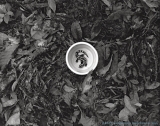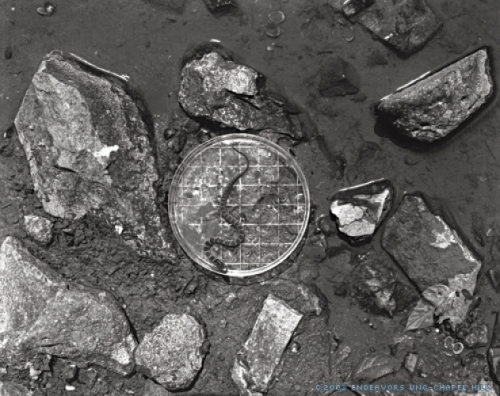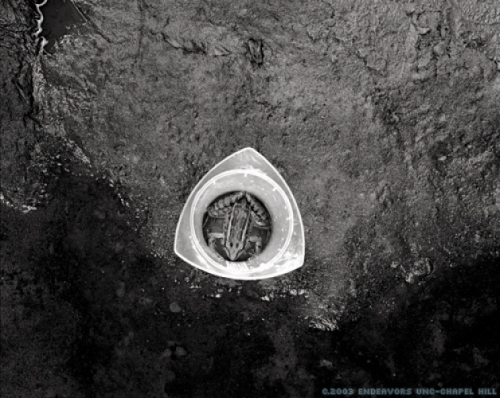Jeff
Whetstone freely admits, “I never worked with animals before.”
It was an omission his artistic soul could not let stand forever.
Though Whetstone has for more than a decade built a reputation
as a photojournalist and writer concentrating on Southern life,
small communities, and migrant workers — that is, on humans — his
creative instincts draw equally from a rural East Tennessee childhood
spent largely out-of-doors and blessedly free. “I had miles
of hill country to roam, laced with trails, braided by streams,
and pocked with caves,” wrote the thirty-four-year-old Chattanooga
native. Recalling a fascination with the animal kingdom he nurtured
while a boy, Whetstone tells how he became a discerning naturalist
in the outsized East Tennessee woods. “I could distinguish
the subtle markings differentiating a Northern Water Snake from
a Common Water Snake. I learned there are twenty-three types of
crawdads. A salamander tadpole develops differently than a frog
tadpole.”
The meaning of this youthful experience found expression in Animal
Planet. This exhibition is a “commentary on how humans relate
to nature,” Whetstone says.
Animal Planet is remarkable for the seeming spotlight
it casts on each subject. Though set in environs where the animals
make
their homes — streambeds and leaf-strewn forest floors — each
work presents a creature isolated from its surroundings by the
man-made vessel holding it captive. Tadpoles press the sides of
a water bowl, their tails pointing inward in unison as each strives
to break free; an opossum regards the camera’s lens with
an evil eye, palpably demanding immediate release or else; a frog
is unceremoniously plopped before prying viewers, who could never
apprehend the texture of its flesh or the shine of its eye were
it to hop free in the moss.
Whetstone is sensitive to the seeming cruelty of this intrusion.
He did not harm the creatures showcased by his eight-by-ten-inch
camera. (Whetstone worked with an animal-control agent.) But he
does not deny a deliberate “tension” suffusing these
images, the disturbing “element of capture.” The periphery
of each photograph illustrates a circle of serenity, the natural
habitat whence the creature was momentarily snatched. In the center,
the human artifice: a beaker or bowl for displaying animals, which
Whetstone says “becomes like an altar where we are offered
the opportunity to meditate on them at our leisure, not for just
a fleeting moment.”
Whetstone speaks, slowly and deliberately, of finding his artistic
center “in places where nature thrives despite human activity,
and where humans commune with nature out of a sense of instinct.
I’m very interested in trails in suburban areas — in
finding the human link to the natural world: gardeners who don’t
really need to garden for food; hunters who hunt for pleasure;
kids exploring the woods.” When teaching his introductory
course in photography at UNC-Chapel Hill, or a class in portraiture
at Carolina and at Duke, the value Whetstone most wants to instill
in his students is that of observation. They should learn, he says,
to “pay close attention, to scrutinize every detail of the
world in which they live. The world, as it is, is incredibly complex — often
more so than our imagination of it.”
Willam C. Nelson was formerly a staff contributor for Endeavors.
Ackland Art Museum exhibited works by Whetstone, lecturer of photography in the Department of Art, as part of its Biennial Studio Art Faculty Exhibition. Animal Planet showed in early 2003. Whetstone exhibits at the Ariel Meyerowitz Gallery, New York City, through May 31, 2003.






